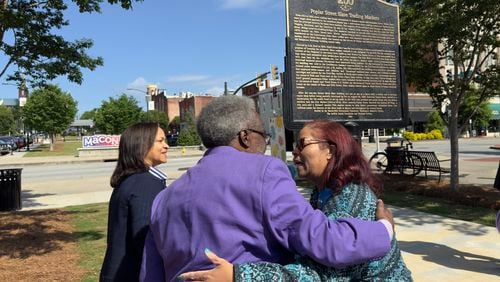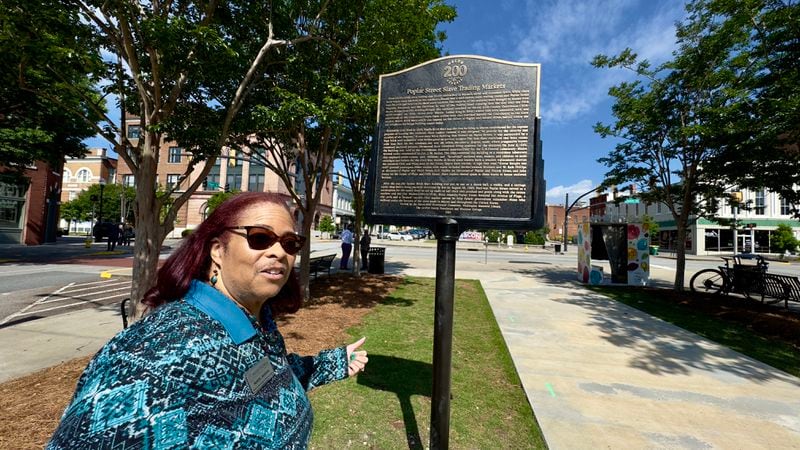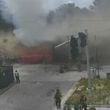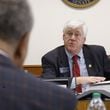MACON — In November 1859, the Macon Weekly Telegraph newspaper published a short, column-wide advertisement squeezed between notices for a photo-and-art gallery and a fall clothing special.
“Just Arrived!” the ad declared. “A likely lot of Maryland and Virginia Negroes, Plough Boys and Girls. Also a few good Washers and Ironers, and Cooks … for sale on reasonable terms.”
The ad was for Noel’s Brick Negro Mart on Poplar Street in downtown. The two-story building, then situated next to what is now the old Telephone Exchange Building, was the first of its kind here. It was erected expressly for displaying and housing slaves to be sold.
Noel’s, with its barred windows, barbwire and a high, fortress-like brick wall spiked with shattered glass to prevent escape, has long since burned. Wide public mention of its existence, or acknowledgement of it and other middle-1800s slave markets in what is now this city’s downtown shopping and dining district, has, down the decades, been scarce.
But this week a historic marker was unveiled in a mid-street park along Poplar Street in a spot less than 250 feet from where Noel’s once stood.
“Poplar Street Slave Trading Markets” its bronzed, bold heading reads atop three paragraphs of text detailing the backstory.
“This is a part of Macon history that has never been talked about or revealed,” Muriel Jackson, a local librarian who researched and crafted wording for the marker, said.
The marker stands prominently and is a stark, sobering reminder in a downtown that is today undergoing a commercial revival.
The marker and two others like it — one near the old county courthouse and jail at the foot of Mulberry Street and another in the Cotton Avenue area in what was once Macon’s “Black Wall Street” — are being installed along the city’s Black Heritage Trail. The project, which includes a number of smaller markers for self-guided tours, is part of Macon’s bicentennial celebration.
Credit: Joe Kovac Jr.
Credit: Joe Kovac Jr.
Jackson, who is Black, heads the Genealogical and Historical Room at the Washington Memorial Library. She believes the markers offer a “broad overview of Macon’s African American community.”
“We need to show that we were part of the community,” Jackson said, “that we were part of making Macon what it is today. The good, the bad and the ugly.”
Another speaker at the marker’s unveiling on Monday, Alex Habersham, a former high school English teacher and mentor who is publisher of the Macon-Middle Georgia Black Pages, said, “This is more than just a marker. This is a symbol of what can happen and how it can influence our community in a positive manner.”
Brandi Simpson Miller, an assistant professor of history at Wesleyan College, one of the sponsors of the trail marker project, told of “the power of remembrance.”
She said the markers “not only commemorate the remarkable lives of the enslaved, but also pay homage to an enduring resilience and indomitable spirit of African American heritage.”
George Muhammad, a local activist and educator who was instrumental in the markers’ creation, said they bring awareness to “the Black struggle in Macon, how deep it has been.”
After a ceremony for the Poplar Street marker’s unveiling, Jackson, the librarian, took a long look at her handiwork. Her words included a line she wrote about Noel’s mart, how, audaciously, “slave traders claimed it was designed ‘to provide for the security and comfort of the Negroes.’”
Shaded by the marker as she stood in the morning sun, Jackson said, “All that really happened. Even though I wrote it, reading it you start getting emotional thinking about what the words really mean.”








